HRT patches
Twice-weekly patches for symptoms of menopause


Secure delivery
UK clinicians
HRT patches can be a great option if you’re looking to simplify your treatment. No daily tablet, just use two patches a week to tackle symptoms of menopause.
We understand that the menopause can be difficult to deal with. That’s why we send your treatment directly to you, when you need it, when you order HRT patches online with us.
HRT patches are an easy-to-use and effective treatment for the symptoms of menopause. You stick one on your skin, usually below the waist, and it supplies you with hormones. These hormones can help to treat the frustrating symptoms of menopause and support your long-term health. And they come in either combined or oestrogen-only options, so they can be tailored to your specific needs.
You’ll use two different patches each week - one will be on for four days and the other for three. This helps to make sure that you’re getting the right amount of treatment from your patches. So although you’ll have to remember to change your patch on these days, you might find it easier or more convenient than taking something like a tablet (for example) on a daily basis.
HRT patches work by delivering hormones transdermally. This means that when you stick the patch on your skin the hormones kept in it are gradually released into your body by being absorbed through your skin. So, basically, when you’re using a HRT patch you’ll be getting a steady dose of treatment until it’s time for you to swap it out for a new one.
So how does this help with menopause? Well, symptoms of menopause occur when your body stops producing oestrogen at the same level that it did before. This usually starts happening before your last period, when they start to become irregular. This stage, known as perimenopause, tends to last for around four years. And then at some point you’ll get your last period (though you won’t be aware of this at the time); the 12 months following this is the stage known as menopause. After this you’ll be postmenopausal – which means you won’t get any more periods, and you’re no longer fertile. During this stage symptoms of menopause tend to improve, but the decreased amount of oestrogen can make you more likely to get certain health issues such as osteoporosis.
By delivering a steady flow of oestrogen into your system, HRT patches can both improve the uncomfortable symptoms of menopause such as hot flushes, as well as reduce the risk of long-term problems like osteoporosis.
HRT patches can be a good option for you for a number of reasons but, ultimately, it all comes down to preference.
So if you’re someone who’s not great at remembering to take daily tablets, patches can offer you at least a few days respite between having to remember your medication. They can be discreet too, and you don’t need to take them off or change them when you take a bath or shower.
Another positive of HRT patches is that they don’t come with the risk of getting certain side effects that come with tablets, such as heartburn or indigestion. And, also unlike tablets, they don’t increase your risk of blood clots.
They also deliver hormones to your whole body, which gives them the edge over vaginal oestrogen, which only treats localised symptoms such as vaginal dryness.
It usually takes a few weeks for you to start feeling the benefits of any form of HRT, and patches are no different. But this isn’t the same for everyone – you may notice that you start to feel better in a shorter time-frame.
If you’re still not feeling the benefits after a month or two, it may be that you need to increase your dose, or switch to a different HRT.

How we source info.
When we present you with stats, data, opinion or a consensus, we’ll tell you where this came from. And we’ll only present data as clinically reliable if it’s come from a reputable source, such as a state or government-funded health body, a peer-reviewed medical journal, or a recognised analytics or data body. Read more in our editorial policy.
The form of HRT you take (Oestrogen-only or combined) will depend on whether you’ve had a hysterectomy or not. This is because when you take oestrogen-only HRT without progesterone it can increase your risk of womb cancer. Taking a progesterone alongside it works to protect you from this risk.
This doesn’t mean you have to take them both in one treatment if you don’t want to. It just means that if you take oestrogen-only HRT you’ll have to take a separate progesterone in whichever form you like.
Continuous HRT delivers a steady dose of hormones into your system at a consistent level, whereas sequential HRT delivers variable doses, designed to either mimic your menstrual cycle or induce a three-monthly bleed. But which version is best for you?
Well this is where it gets a little more complicated.
Whether you take continuous or sequential HRT depends on which stage of the menopause you’re in. Generally speaking, sequential HRT is for women who are still getting periods (i.e. those in the perimenopausal stage), whereas continuous is for those in the postmenopausal stage (who are no longer getting periods).
There are two kinds of sequential HRT: monthly cyclical and three-monthly cyclical. The one you take will be down to your preference, as well as your clinician’s recommendation. Monthly cyclical tends to induce a monthly bleed, whereas three-monthly cyclical will induce a bleed every three months.
You can switch from one form of HRT to another, yes. (So long as you get the go-ahead from your clinician.) You’ll just need to make sure that you’re still taking the right form of HRT for the stage of menopause that you’re at. So whether you want to change from HRT patches to gel, gel to patch, tablet to patch or gel to patch, it’s not a problem. You’ll just need to make sure you’re still getting the right hormones for your health.
And if you’ve been taking sequential HRT for a year or more this can usually be changed to continuous HRT. This should lead to your periods stopping, but you may still get some unpredictable bleeding if you’re not postmenopausal.

How we source info.
When we present you with stats, data, opinion or a consensus, we’ll tell you where this came from. And we’ll only present data as clinically reliable if it’s come from a reputable source, such as a state or government-funded health body, a peer-reviewed medical journal, or a recognised analytics or data body. Read more in our editorial policy.
You should put your HRT patch on a clear, hairless area of skin – ideally below the waist. This is to make it easier to stick to your skin, making it less likely to come off as you go about your daily life. The best locations for HRT patches tend to include the buttocks, thighs or lower stomach. You should also make sure that wherever you choose to put your patch is free from powder, oil or lotion to give it the best chance of staying on until you need to change it.
HRT patches shouldn’t go on or near your breasts, this is because when they’re too close to your breasts they can cause an increased risk of breast cancer.
HRT patches don’t have to go below the waist, but it’s certainly ideal. This is because HRT patches are absorbed better by the skin around this area, making them more effective. So if you want to use your patch somewhere else, such as your shoulder blade or arm, it’s not a problem. Just know that you won’t be getting as much from the treatment if you put it in these areas.
HRT patches have the best chance of staying on if they’re placed on dry, cool skin. Lotions, oils, powders and water can all increase the chances of your patch falling off early, so you’re best off applying your patch before moisturising, or making sure you give your skin time to dry and cool down after having a bath or shower.
If your patch does fall off, replace it as soon as possible, either with your current one or a new one, and resume your schedule as before.

How we source info.
When we present you with stats, data, opinion or a consensus, we’ll tell you where this came from. And we’ll only present data as clinically reliable if it’s come from a reputable source, such as a state or government-funded health body, a peer-reviewed medical journal, or a recognised analytics or data body. Read more in our editorial policy.
Have something specific you want to know? Search our info below, or ask our experts a question if you can’t find what you’re looking for.
Any medications have the potential to cause side effects, and HRT patches are no different. But having said that, HRT patch side effects tend to improve within around three months (if you even get any at all). Some of the most common side effects can include tender breasts, stomach pain, headaches, nausea and vaginal bleeding, as well as irritated, itchy skin or a rash where you apply the patch.
Whether you get a bleed on HRT patches will depend on two things: what stage of the menopause you’re on, and whether you’re using a sequential or continuous patch. With continuous HRT patches you may get vaginal bleeding as a side effect for the first four to six months, but you won’t get a period as such. However with sequential HRT you should get a bleed, which will be either monthly or every three months (depending on which form of sequential HRT you’re using).
When it comes to doses of HRT patches, you’ve got options. Evorel Conti and Sequi (both combined HRT) come in doses of 50mcg of oestrogen and 170mcg of progesterone, whereas Estradot, Estraderm and Evorel (oestrogen-only HRT patches) come in doses ranging from 25mcg of oestrogen per day to the highest dose of HRT patch, which is 100mcg of oestrogen over 24 hours.
Generally speaking, you’ll be advised to start on a lower dose patch to help control your symptoms, which can be increased depending on your needs.
There are a few brands of HRT patch available. At the time of writing, the most popular ones are Evorel, Estraderm and Estradot. Evorel is a combined HRT patch, delivering both oestrogen and progesterone all year-round in their ‘Evorel Conti’, and providing some oestrogen-only patches and some combined patches in their ‘Evorel Sequi’, which are to be used according to your prescribers instructions.
Estradot and Estraderm both provide oestrogen-only HRT patches, so if you want to use these but haven’t had a hysterectomy, you’ll need to take a progesterone separately.
The best patch for you is the one that treats your symptoms, keeps you safe and suits your lifestyle. So it’s down to you, really. But if you’re still not sure?
Our expert clinicians can help you find the best patch for you once you’ve talked to us about your health. Just take our consultation to get tailored recommendations. Whichever one you choose will be sent straight to your door by next-day delivery, on a schedule that works for you. Our experts will keep in touch with you to see how you’re getting on with it, and if you need any help with anything at any time, just log into your account and send us a message. It’s as simple as that.
Management of the Perimenopause. Clinical Obstetrics and Gynecology, [online] 61(3), p.1.
Types - Hormone replacement therapy (HRT). [online] NHS.

Oestrogen-only HRT patch. Change twice a week and reduce menopause symptoms up to 75%.
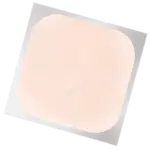
Combined continuous HRT patch. Used it's been more than 12 months since your last period.
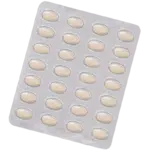
Combined continuous HRT pills, at a lower dose. Good if you're sensitive to hormones.
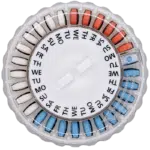
Combined treatment for menopause relief. Sequential pills for women who no longer have periods.
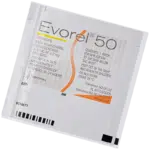
Sequential dose patch. Use to manage menopause symptoms if you still have periods.

Combined sequential HRT tablets. For treating menopause symptoms if you still have periods.
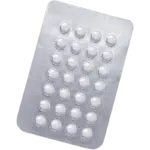
Oestrogen-only HRT patches and pills. For if you've had a hysterectomy, or used with progestins.

Combined HRT skin patch used by women who've had a year or more since their last period.

Oestrogen-only tablet that relieves menopausal symptoms. Often prescribed for women who have had a hysterectomy.

Like Elleste Duet, but continuous. Which makes it best suited to postmenopausal women.
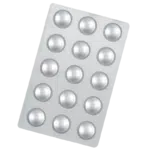
The natural progesterone treatment. Taken alongside oestrogen to relieve symptoms of menopause.
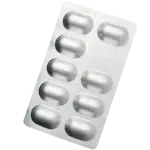
Progestogen-only tablet to help symptoms of menopause. To be taken alongside an oestrogen for a combined HRT.
Testosterone gel you can rub onto your skin. Helps with loss of libido.

Registered with GMC (No. 4624794)
Meet Daniel
Registered with GPhC (No. 2202465)
Meet Sanjeda
Registered with GPhC (No. 2070724)
Meet Craig
Always read the leaflet that comes with your medication and tell us about any side effects you get.
We know health, but you know you.
Our experts tell you what’s safe, but you decide what’s best.
Answer a few questions and tell us about yourself. Get tailored advice from our clinicians so you can choose better.
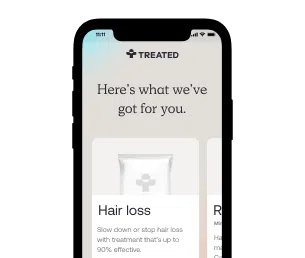
Choose your treatment and how often you have it delivered.
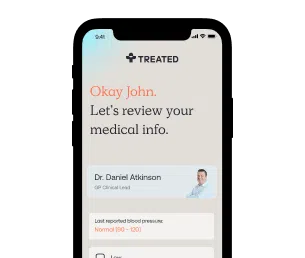
We know things change. It’s the nature of life. We’ll check in regularly to make sure your treatment is still right for you.
Pause. Change. Skip. Start again. Any time you like.
Here are some other things we can help with.
Choose from our range of tablets and solutions. Get ongoing care and support from our experts.
Stop smoking treatments that can help you kick the habit forever, and reduce your risk of disease.
Tablets or injections. Tailored weight loss treatments combined with ongoing support from our experts.
We're making healthcare more about you. Sign up to our newsletter for personalised health articles that make a difference.
Disclaimer: The information provided on this page is not a substitute for professional medical advice, diagnosis, or treatment. If you have any questions or concerns about your health, please talk to a doctor.
We couldn't find what you're looking for.
Here's everything we treat. Or, if you're looking for something we don't have yet, you can suggest something.
If there’s a particular treatment or condition you’re looking for, tell us and we’ll look into it for you.
Submit your question here, or tell us if you’ve found an issue on our site.
We’ll get back to you very soon. We aim to respond to all queries in one working day.
You’re signed up to our newsletter. Keep an eye on your inbox for our latest update.
By clicking 'Subscribe now' you're agreeing to our Privacy Policy.
We’ve sent you an email asking you to confirm your email address.